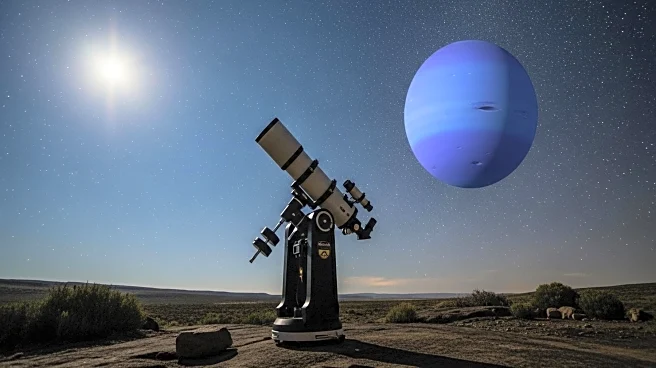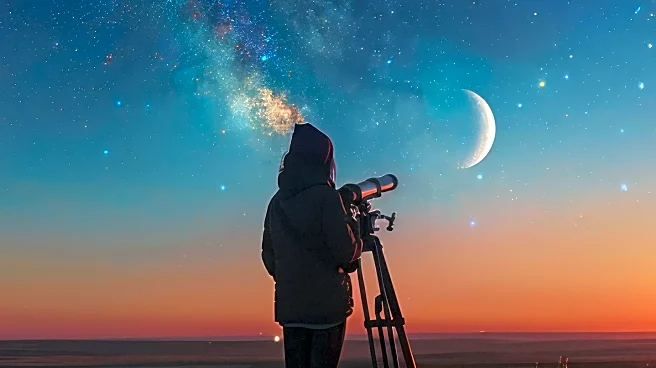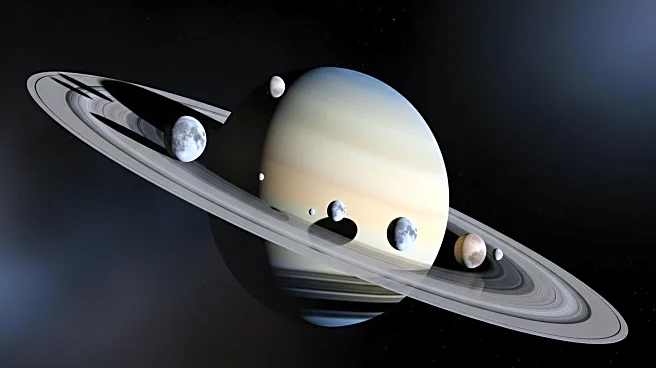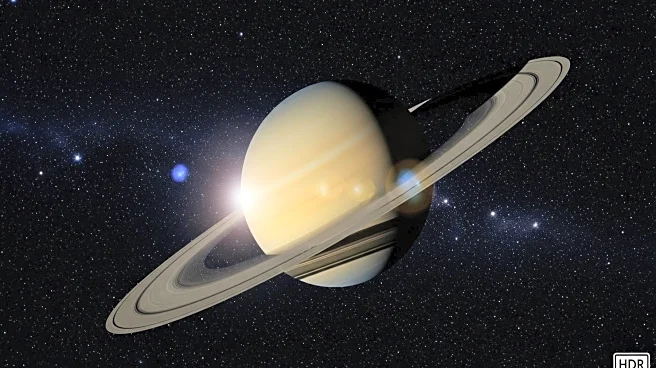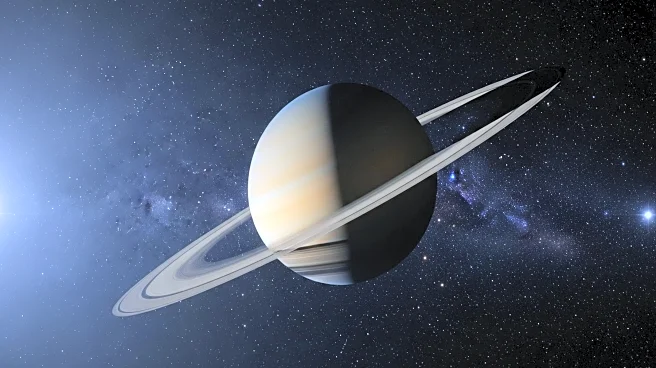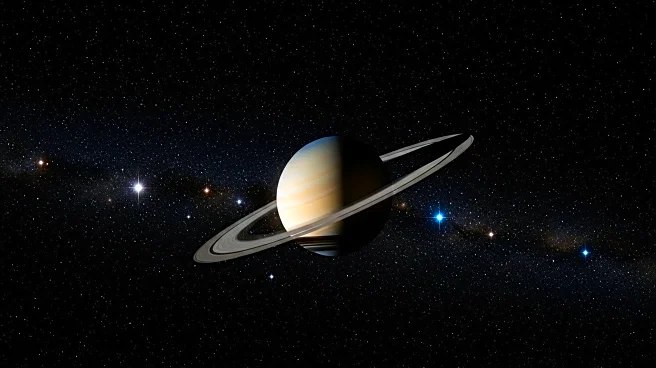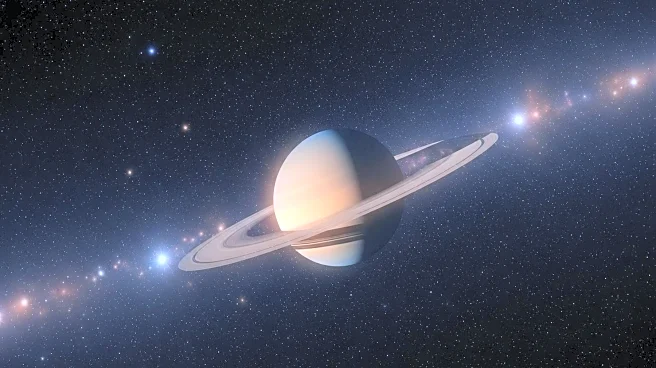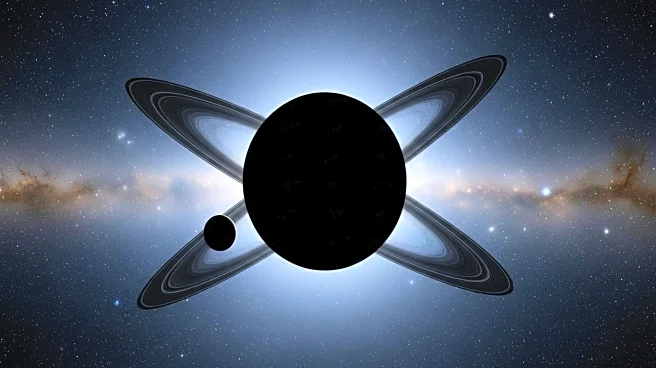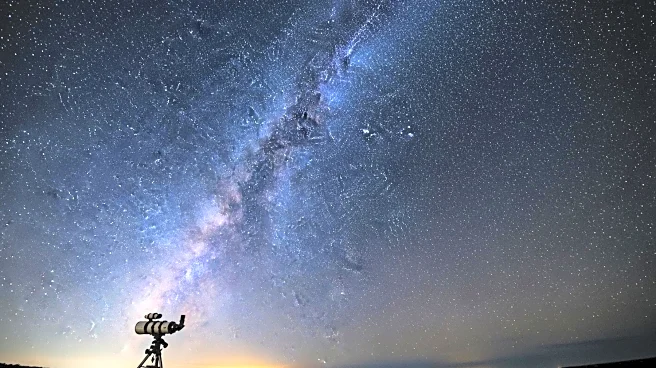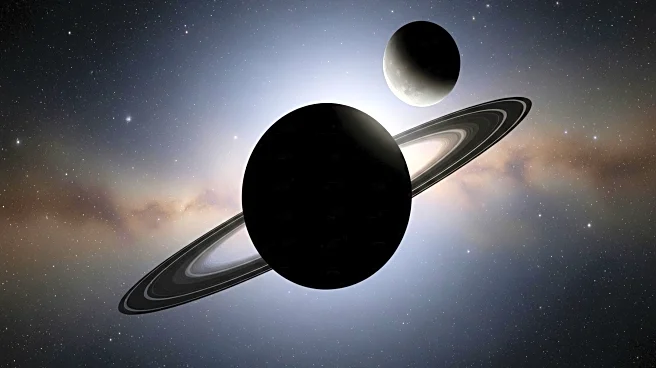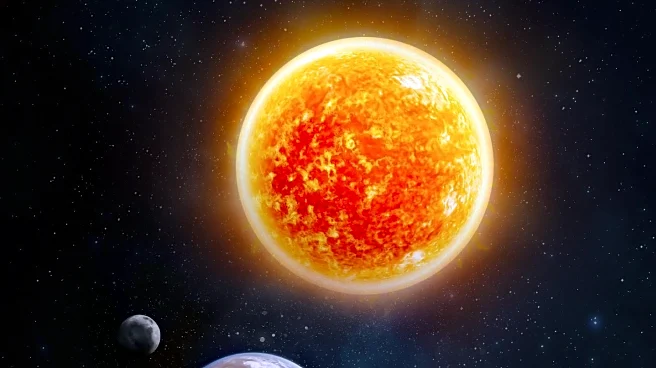What is the story about?
What's Happening?
On September 23, Neptune, the solar system's most distant planet, reached opposition, making it visible throughout the night. Located in the constellation Pisces, Neptune can be observed in the same binocular field as the brighter Saturn. At magnitude 7.7, Neptune is not visible to the naked eye but can be seen using binoculars or telescopes. The planet appears as a blue-gray, star-like disk, 2 inches wide, at a distance of 2.68 billion miles from Earth. Saturn's proximity aids in locating Neptune due to the lack of similarly bright stars nearby. This celestial event provides an opportunity for astronomers and enthusiasts to observe Neptune alongside Saturn.
Why It's Important?
Neptune's opposition offers a unique chance for astronomers and skywatchers to observe the planet, which is typically difficult to see due to its distance from Earth. This event can enhance public interest in astronomy and provide educational opportunities for those interested in learning more about the solar system. Observing Neptune alongside Saturn can also aid in understanding planetary motion and celestial mechanics. Such events can inspire amateur astronomers to engage in stargazing and contribute to scientific observations.
What's Next?
Following Neptune's opposition, astronomers and enthusiasts may continue to track its movement across the sky, providing data for ongoing research. Educational institutions and astronomy clubs might organize viewing events to capitalize on public interest. The event could also lead to increased sales of telescopes and binoculars as more people become interested in observing celestial phenomena.
AI Generated Content
Do you find this article useful?
